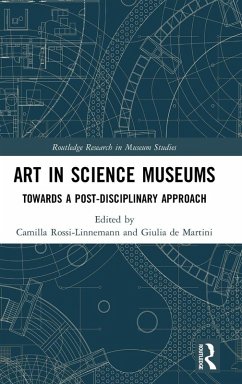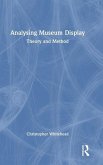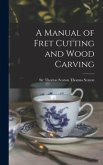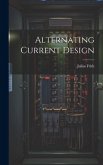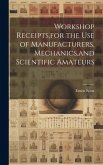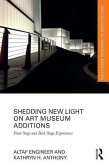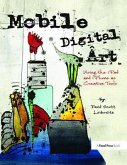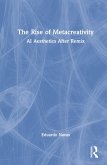Art in Science Museums
Towards a Post-Disciplinary Approach
Herausgeber: Rossi-Linnemann, Camilla; Martini, Giulia de
Art in Science Museums
Towards a Post-Disciplinary Approach
Herausgeber: Rossi-Linnemann, Camilla; Martini, Giulia de
- Gebundenes Buch
- Merkliste
- Auf die Merkliste
- Bewerten Bewerten
- Teilen
- Produkt teilen
- Produkterinnerung
- Produkterinnerung
Art in Science Museums brings together perspectives from different practitioners to reflect on the status and meaning of art programmes in science centres and museums around the world.
Andere Kunden interessierten sich auch für
![Analysing Museum Display Analysing Museum Display]() Christopher WhiteheadAnalysing Museum Display197,99 €
Christopher WhiteheadAnalysing Museum Display197,99 €![A Manual of Fret Cutting and Wood Carving A Manual of Fret Cutting and Wood Carving]() Seaton Thomas SeatonA Manual of Fret Cutting and Wood Carving35,99 €
Seaton Thomas SeatonA Manual of Fret Cutting and Wood Carving35,99 €![Alternating Current Design Alternating Current Design]() Julius FrithAlternating Current Design34,99 €
Julius FrithAlternating Current Design34,99 €![Workshop Receipts, for the Use of Manufacturers, Mechanics, and Scientific Amateurs Workshop Receipts, for the Use of Manufacturers, Mechanics, and Scientific Amateurs]() Ernest SponWorkshop Receipts, for the Use of Manufacturers, Mechanics, and Scientific Amateurs43,99 €
Ernest SponWorkshop Receipts, for the Use of Manufacturers, Mechanics, and Scientific Amateurs43,99 €![Shedding New Light on Art Museum Additions Shedding New Light on Art Museum Additions]() Altaf EngineerShedding New Light on Art Museum Additions198,99 €
Altaf EngineerShedding New Light on Art Museum Additions198,99 €![Mobile Digital Art Mobile Digital Art]() David Scott LeibowitzMobile Digital Art191,99 €
David Scott LeibowitzMobile Digital Art191,99 €![The Rise of Metacreativity The Rise of Metacreativity]() Eduardo NavasThe Rise of Metacreativity174,99 €
Eduardo NavasThe Rise of Metacreativity174,99 €-
-
-
Art in Science Museums brings together perspectives from different practitioners to reflect on the status and meaning of art programmes in science centres and museums around the world.
Hinweis: Dieser Artikel kann nur an eine deutsche Lieferadresse ausgeliefert werden.
Hinweis: Dieser Artikel kann nur an eine deutsche Lieferadresse ausgeliefert werden.
Produktdetails
- Produktdetails
- Verlag: Taylor & Francis
- Seitenzahl: 264
- Erscheinungstermin: 5. Dezember 2019
- Englisch
- Abmessung: 236mm x 162mm x 25mm
- Gewicht: 555g
- ISBN-13: 9781138589520
- ISBN-10: 1138589527
- Artikelnr.: 58412671
- Herstellerkennzeichnung
- Libri GmbH
- Europaallee 1
- 36244 Bad Hersfeld
- gpsr@libri.de
- Verlag: Taylor & Francis
- Seitenzahl: 264
- Erscheinungstermin: 5. Dezember 2019
- Englisch
- Abmessung: 236mm x 162mm x 25mm
- Gewicht: 555g
- ISBN-13: 9781138589520
- ISBN-10: 1138589527
- Artikelnr.: 58412671
- Herstellerkennzeichnung
- Libri GmbH
- Europaallee 1
- 36244 Bad Hersfeld
- gpsr@libri.de
Camilla Rossi-Linnemann is currently International Partnership Coordinator at the National Museum of Science and Technology Leonardo da Vinci in Milan, where she focuses on international projects and collaborations for visitor engagement and cultural diplomacy, especially based on the interrelation between science, technology and art. Giulia de Martini is currently Head of Research at TheFabLab, a digital manufacturing laboratory, where she studies the impact of innovation in society and spreads awareness about the technological and human competences involved in the fourth industrial revolution, focusing on the connections between different fields of knowledge.
Introduction: the post-disciplinary museum
1. Premise
1.1 How art contributed to the public image of science
1.2 Making meaning with Art, Science and Technology
2. Art as a narrative tool: seeing the unseen
2.1 A house of collaboration: investigating the intersections of art and biomedicine
2.2 Sophia's Whale and the Hypercubic Showcase of Sudden Comprehension
2.3 In the Spirit of Enquiry
2.4 Context, collaboration and contemporary culture
2.5 Case studies
3. Art for science education and enquiry: patterns of thinking
3.1 The Exploratorium: Art as Inquiry
3.2 Art Thinking
3.3 Art as ingredient for meaningful science learning
3.4 Answering the unasked questions
3.5 Case studies
4. Art, inclusion, controversy and imagination: from facts to values
4.1 Criticality, Imagination and Interaction: A new basis for Art Science Curation
4.2 Shifting meaning, shifting contracts - Biological arts and evolving museum ethics
4.3 Decolonising natural history museums through contemporary art
4.4 Case studies
Conclusions - The Post Disciplinary Museum
1. Premise
1.1 How art contributed to the public image of science
1.2 Making meaning with Art, Science and Technology
2. Art as a narrative tool: seeing the unseen
2.1 A house of collaboration: investigating the intersections of art and biomedicine
2.2 Sophia's Whale and the Hypercubic Showcase of Sudden Comprehension
2.3 In the Spirit of Enquiry
2.4 Context, collaboration and contemporary culture
2.5 Case studies
3. Art for science education and enquiry: patterns of thinking
3.1 The Exploratorium: Art as Inquiry
3.2 Art Thinking
3.3 Art as ingredient for meaningful science learning
3.4 Answering the unasked questions
3.5 Case studies
4. Art, inclusion, controversy and imagination: from facts to values
4.1 Criticality, Imagination and Interaction: A new basis for Art Science Curation
4.2 Shifting meaning, shifting contracts - Biological arts and evolving museum ethics
4.3 Decolonising natural history museums through contemporary art
4.4 Case studies
Conclusions - The Post Disciplinary Museum
Introduction: the post-disciplinary museum
1. Premise
1.1 How art contributed to the public image of science
1.2 Making meaning with Art, Science and Technology
2. Art as a narrative tool: seeing the unseen
2.1 A house of collaboration: investigating the intersections of art and biomedicine
2.2 Sophia's Whale and the Hypercubic Showcase of Sudden Comprehension
2.3 In the Spirit of Enquiry
2.4 Context, collaboration and contemporary culture
2.5 Case studies
3. Art for science education and enquiry: patterns of thinking
3.1 The Exploratorium: Art as Inquiry
3.2 Art Thinking
3.3 Art as ingredient for meaningful science learning
3.4 Answering the unasked questions
3.5 Case studies
4. Art, inclusion, controversy and imagination: from facts to values
4.1 Criticality, Imagination and Interaction: A new basis for Art Science Curation
4.2 Shifting meaning, shifting contracts - Biological arts and evolving museum ethics
4.3 Decolonising natural history museums through contemporary art
4.4 Case studies
Conclusions - The Post Disciplinary Museum
1. Premise
1.1 How art contributed to the public image of science
1.2 Making meaning with Art, Science and Technology
2. Art as a narrative tool: seeing the unseen
2.1 A house of collaboration: investigating the intersections of art and biomedicine
2.2 Sophia's Whale and the Hypercubic Showcase of Sudden Comprehension
2.3 In the Spirit of Enquiry
2.4 Context, collaboration and contemporary culture
2.5 Case studies
3. Art for science education and enquiry: patterns of thinking
3.1 The Exploratorium: Art as Inquiry
3.2 Art Thinking
3.3 Art as ingredient for meaningful science learning
3.4 Answering the unasked questions
3.5 Case studies
4. Art, inclusion, controversy and imagination: from facts to values
4.1 Criticality, Imagination and Interaction: A new basis for Art Science Curation
4.2 Shifting meaning, shifting contracts - Biological arts and evolving museum ethics
4.3 Decolonising natural history museums through contemporary art
4.4 Case studies
Conclusions - The Post Disciplinary Museum

